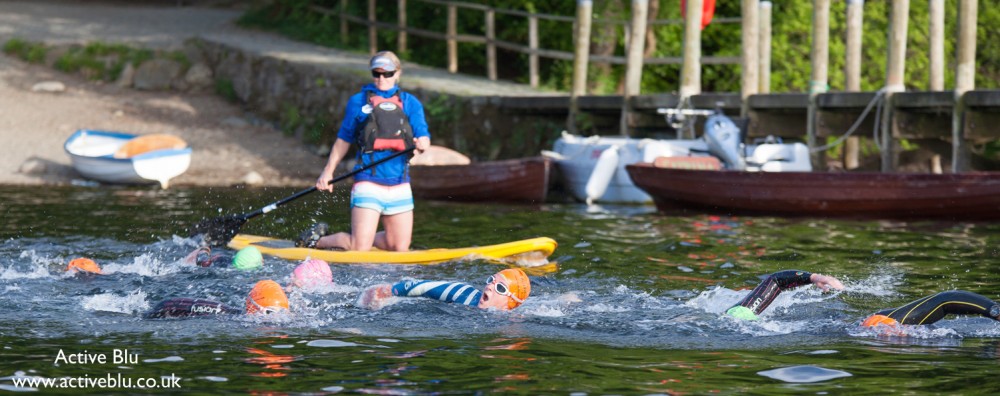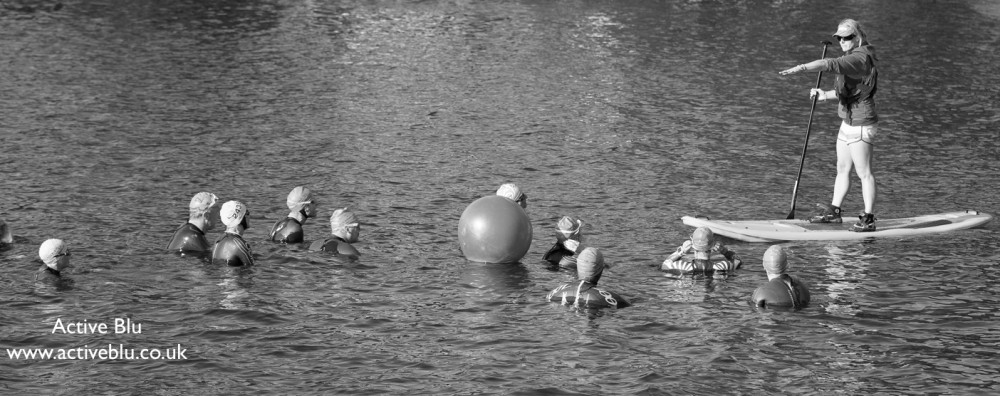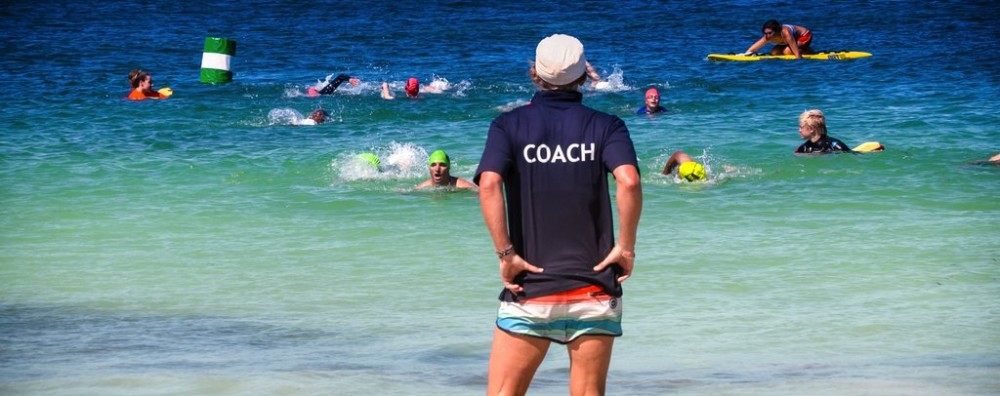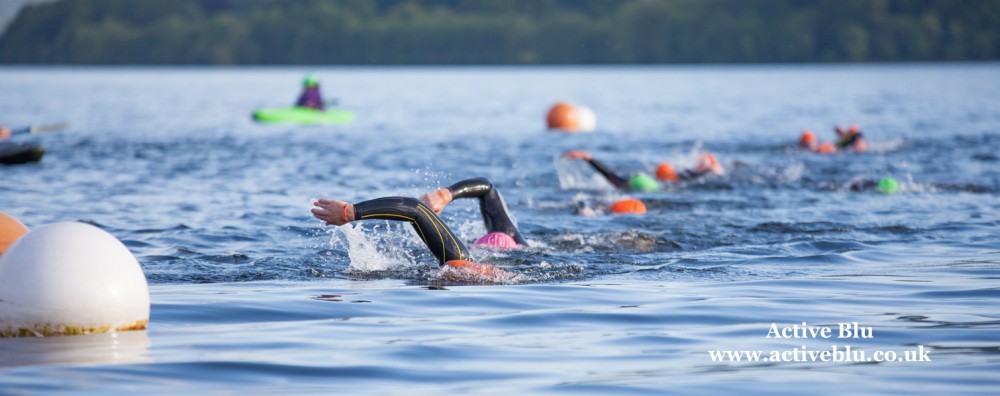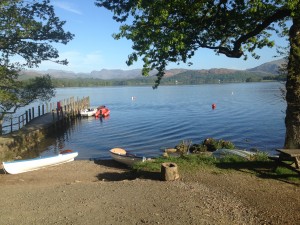7 Steps to Developing your Open Water Coaching.
Emma Brunning is a British Triathlon Tutor, Swim Smooth Coach and a specialist in open water swim coaching. With the open water season in full swing she shares her top 7 tips for coaching athletes in an open water environment.
Date Published: 03 July 2015
As a coach, tutor and mentor I like nothing more then supporting athletes and coaches to take that first step towards a new challenge, dream or goal. Whilst many people find new experiences exciting and thrilling, others can get overwhelmed and anxious. This is where our position as coaches can be very diverse.
As a coach we have many roles, not only to be technically knowledgeable and emotionally supportive, but also to provide great opportunities for our athletes by developing their skills and fitness, enhancing their understanding and demonstrating best practice.
Studies have recently shown that although the sport of Triathlon is continuing to increase in popularity, one of the main barriers to the sport is the lack of confidence individuals have with their swim ability, especially when transferring it to the Open Water.
As a specialist in open water swimming, I spend most my time encouraging swimmers, triathletes and coaches to developing their open water skills and tactics within their club or squad environments. I will now share with you a few simple things you can do to support your athletes to become more confident in the open water, train effectively and race smarter.
Keep it Simple- Covering the basics in 7 steps.
1 – Power of the Mind: Training the mind for the open water is just as important as the body. Athletes often can neglect this, spending just 5 minutes doing the following before entering the water can make all the difference.
Think positively – The power of your thoughts can be transforming – It is therefore important that we think positively about the experience we are about to have.
Suggest to your athletes from the moment they start to prepare for their training or race to focus on only good things. It sounds simple – but do try it!!
Think about: The lovely surroundings you are in, the warmth of the water, what an amazing experience you are having. (Even if sometimes you have to fake it) Keep these thoughts going through out the training or race. Although it may seem silly, they will help, but like everything it does take practice.
Relaxed Breathing – We all have moments in the open water when we experience a slight panic or anxiety – Make sure before your athletes get into the water you remind them of the importance of a relaxed continued exhalation into the water.
Often when we feel anxious or stressed we tend to hold on to the breath and tense up, making the situation worse. Talk about the cause and effect of the breath – the more relaxed your exhalation the more relaxed your inhalation and this results in a calmer, more enjoyable session with better results. I would suggest practicing this on dry land or in the pool. Getting your swimmers breathing right is the first thing to address, as they will feel a lot better and more efficient.
2 – Strategies: Plan for the unexpected.
Plan – Talk through with your athletes any concerns they may have whilst in the open water. Once this is done, put a few strategies in place so that your athletes have the confidence to deal with them if they were to occur.
Practice – Once the athletes concerns are identified, make sure you address them in training and practice them. This will give the athlete the confidence they need to deal with that situation should it arise within a race. An example: loosing your goggles – Train without them for a set so the athlete knows they can do it if need be. Simple things and good preparation lead to great results.
Performance – Once your athletes ready for their event – Suggest they stick to the race plan, try to ignore what everyone else is doing or how fast they set off – Its now the time to do everything you have practiced in training. Mental rehearsal, mass starts, pacing, sighting, drafting, and turning e.t.c.
3 – Drills and Skills: Train your open water skills all year round.
Specificity – Train as you want to race – Whether in the pool or the open water make sure a percentage of your training focuses on the essential skills needed for your race environment. In open water we need skills such as: drafting, sighting, turning around Buoys, mass starts…and the list goes on.
The importance of practicing these all year round means, that come race season you are accustomed to all the skills required to make the transition from pool to open water. The athletes that have had this training often stand out above the rest, going into the season fully prepared and confident in their first few open water swims.
Take a look at Emma’s pool based open water session plans here.
Read these links: For a deeper insight into the essential skills needed for open water, check these two links out from Swim Smooth: here and here
4 – Pool versus open water: Get the mix right.
Keeping the pool sessions – As the weather warms up athletes tend to head to the open water and the pool sessions can often get neglected. The importance of keeping your pool sessions over the summer season is essential. Pool training allows you greater control in monitoring your workouts and times, keeping your speed and fitness, whilst still working on technique. Although we want you to enjoy the open water, the right mix is essential.
Just add open water – I would however suggest to substitute 1or 2 pool sessions a week for open water (depending on training load) This session could replace your endurance session in the pool whilst adding a freshness to your training and developing your open water skills. If you only swim in the open water, the inability to monitor your sessions means that most athletes will start to slow down over time. The key here is to design a structured open water session for your athletes.
Take a look at Emma’s open water session plan here
5 – A general training week: 3 main components.
The training that will really benefit your athletes:
1 – Fitness (CSS and Endurance)
2 – Technique
3 -Open Water.
Add all three training methods within a week and your athletes will see the improvements and times reducing. Keep the sessions well structured and focused.
Swim Smooth – links for more information into how to structure your weeks training here.
6 – Consistency: The key to success.
Consistency – The key to success is putting in the hours, week in and week out- Try and encourage your athletes to set realistic training goals and keep to them. This seems simple, but getting consistency is generally hard with everything else people have to fit into their lives. Try to support your athletes to train smart and regularly with the time they have. They will see results just from constant, regular weeks of training.
7 – Enjoyment: Most importantly.
Most people take part in triathlon for fun, seeking a new challenge or goal. As coaches we know that the people we coach are amazing – Fitting training around their other important commitments, such as family, work and education. Therefore lets keep supporting our athletes by training them effectively so that they are prepared and confident to race, enter an event or more importantly – lets create a safe, fun environment so that we can encourage more people out there to get involved keep fit and stay healthy.
Just keep Swimming
Emma Brunning
Coach, Tutor and Mentor.




